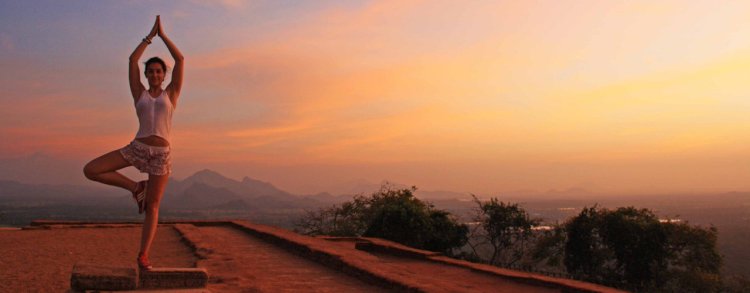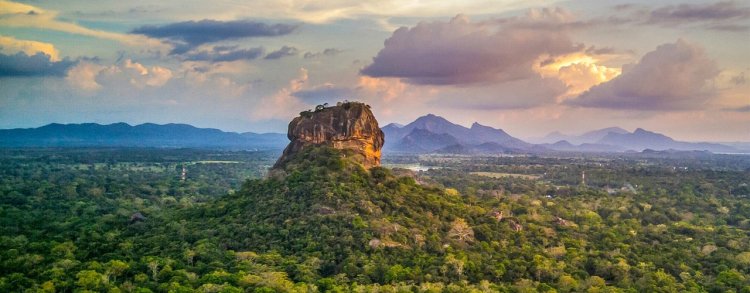Sigiriya: The Majestic Rock Fortress of Sri Lanka
Explore the ancient marvel of Sigiriya, Sri Lanka's iconic rock fortress. Discover its history, stunning frescoes, royal palace ruins, and breathtaking views. A must-visit destination for culture and adventure enthusiasts.
Nestled in the heart of Sri Lanka’s Cultural Triangle, Sigiriya, often referred to as the "Eighth Wonder of the World," is a masterpiece of ancient engineering and art. Rising dramatically from the central plains, this colossal rock fortress stands as a testament to the ingenuity of Sri Lanka’s early civilization. If you're planning a trip to Sri Lanka, Sigiriya is a must-visit destination, offering a unique blend of history, culture, and breathtaking scenery.

The History Behind Sigiriya: A Tale of Power and Intrigue
Sigiriya, also known as Lion Rock, has a history that is as fascinating as its appearance. The story begins in the 5th century AD with King Kashyapa, who, after seizing the throne from his father, sought to build an impregnable fortress to protect himself from his brother’s revenge. Perched atop a 200-meter-high rock, the fortress was designed to be both a royal palace and a defensive stronghold, complete with elaborate gardens, ponds, and impressive frescoes.
The name "Sigiriya" is derived from "Sinha-giri," meaning "Lion Rock." At the entrance to the final ascent of the rock, visitors once had to pass through the open jaws and throat of a gigantic lion structure, of which only the paws remain today. This lion-shaped entrance symbolizes the power and majesty of the ancient kingdom.
Exploring Sigiriya: What to See and Do

1. The Sigiriya Frescoes
One of the highlights of visiting Sigiriya is the chance to see the famous frescoes. These vibrant paintings, located about halfway up the rock, depict celestial maidens or apsaras, believed to be representations of the women in King Kashyapa’s court. Painted using natural pigments, these frescoes have survived for over 1,500 years, and their vivid colors and intricate details continue to captivate visitors.
2. The Mirror Wall
As you ascend Sigiriya, you’ll encounter the Mirror Wall, a highly polished rock surface that once reflected the images of those who passed by. Inscriptions and poems, some dating back to the 8th century, have been etched into the wall by ancient visitors, providing a glimpse into the thoughts and emotions of those who marveled at the site centuries ago.
3. The Summit and the Royal Palace
The climb to the summit of Sigiriya is not for the faint-hearted, but the reward is well worth the effort. At the top, you’ll find the ruins of King Kashyapa’s palace, including foundations of royal chambers, bathing pools, and throne rooms. The summit also offers panoramic views of the surrounding countryside, including lush forests, water gardens, and distant mountains. Standing at the top of Sigiriya, you can’t help but imagine what life was like during the height of its glory.
4. The Water Gardens and Terraced Gardens
At the base of Sigiriya, you’ll find some of the world’s oldest landscaped gardens. The Water Gardens, with their symmetrical ponds, fountains, and channels, showcase the advanced hydraulic engineering skills of the ancient Sinhalese. As you explore further, the Terraced Gardens lead you along a series of tiered platforms, guiding you towards the base of the rock.
5. The Sigiriya Museum
Before or after your climb, make time to visit the Sigiriya Museum, located near the entrance to the site. The museum provides an in-depth look at the history and significance of Sigiriya, with displays of artifacts, models of the rock fortress, and detailed explanations of the construction techniques used by the ancient builders. It’s a great way to enhance your understanding of this remarkable site.
Tips for Visiting Sigiriya
-
Best Time to Visit: The best time to visit Sigiriya is in the early morning or late afternoon to avoid the midday heat. The site opens at 7:00 AM, allowing you to start your climb before the crowds arrive. Visiting in the late afternoon also offers the chance to see the rock bathed in the golden light of sunset.
-
What to Wear: Comfortable, light clothing and sturdy shoes are essential for the climb. The ascent involves navigating steep steps, so be prepared for a bit of a workout. Don’t forget to bring a hat, sunscreen, and plenty of water to stay hydrated.
-
Getting There: Sigiriya is located about 170 kilometers northeast of Colombo. The most convenient way to reach Sigiriya is by car, which takes around 3-4 hours. Alternatively, you can take a train or bus to nearby towns such as Dambulla or Habarana, and then catch a tuk-tuk or taxi to Sigiriya.
-
Ticket Information: Tickets can be purchased at the entrance, with separate rates for foreign visitors and Sri Lankan nationals. It’s advisable to carry cash as credit card facilities may not always be available.
The Significance of Sigiriya Today
Sigiriya is more than just an ancient ruin; it’s a symbol of Sri Lanka’s rich cultural heritage. Recognized as a UNESCO World Heritage site, it attracts thousands of visitors each year, both locals and tourists, who come to marvel at its beauty and learn about its history. The site continues to be a source of inspiration for artists, historians, and architects around the world.
Why Sigiriya Is a Must-Visit Destination
Sigiriya is a place where history, culture, and nature converge. Whether you’re climbing to the summit to take in the breathtaking views, exploring the ancient gardens, or admiring the artistry of the frescoes, Sigiriya offers a unique and unforgettable experience. As you stand at the top of this ancient fortress, you’ll feel a deep connection to the past, and a sense of awe at the incredible achievements of the people who once called this place home.
If you’re planning a trip to Sri Lanka, make sure Sigiriya is on your itinerary—it’s an adventure you won’t want to miss.
What's Your Reaction?


















